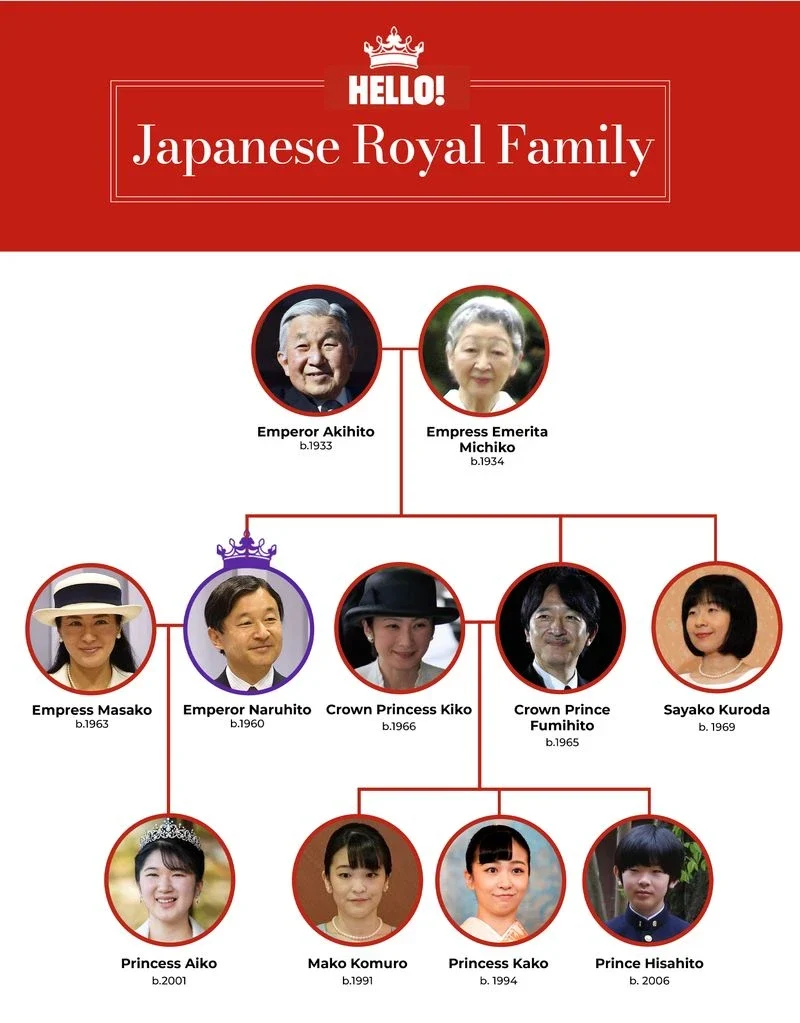No products in the cart.
The Legacy of Power: Exploring the Most Powerful Families in Japan
Japan has long been a country shaped by lineage, hierarchy, and enduring traditions. While much of the global spotlight focuses on Japan’s cultural exports and technological innovations, the country’s internal power structures often go unnoticed. One such structure includes the most powerful families in Japan — those who have shaped the nation politically, economically, and socially for generations. These families are not just wealthy or influential; they often control companies, hold political clout, and maintain deep-rooted ties within elite circles.
In this article, we explore who the most powerful families in Japan are, what makes them powerful, and why they continue to hold influence in modern Japanese society.
The Imperial Family: A Symbolic Yet Unshakable Presence
When discussing the most powerful families in Japan, it’s essential to begin with the Imperial Family. Though their role today is largely symbolic, Japan’s royal lineage is the oldest continuous hereditary monarchy in the world. The Emperor holds no political power, but the family’s historical and cultural influence remains significant.
The Imperial Household Agency maintains strict protocols around the family’s appearances, media coverage, and official duties. They are central to many Shinto rituals, and their presence continues to be revered by much of the population. The family’s symbolic power still plays a role in unifying the nation, especially during times of crisis or major transitions.
The Tokugawa Family: Echoes of the Edo Period
Although the Tokugawa shogunate ended in 1868 with the Meiji Restoration, the Tokugawa name still carries weight. As rulers of Japan during the Edo period (1603–1868), they oversaw a time of peace, isolation, and cultural growth. Descendants of the Tokugawa clan continue to be respected figures in Japanese history and occasionally appear in academic, cultural, or political settings.
While the family no longer holds official political power, the legacy of their governance continues to shape how traditional Japanese society is viewed — with an emphasis on discipline, order, and hierarchy.
The Mori Family: Industrial Power from the Postwar Period
Shifting to more modern times, the Mori family is one of the most powerful families in Japan when it comes to real estate and urban development. The late Minoru Mori was one of Japan’s most prominent real estate developers. His company, Mori Building, was behind some of Tokyo’s most iconic projects, such as Roppongi Hills and the Toranomon Hills complex.
The Mori family’s influence is not just in architecture but in the shaping of Tokyo itself. Their projects integrate business, living, art, and culture in ways that reflect a modern Japan while keeping roots in tradition.

The Mitsui Family: From Merchants to Banking Giants
Another example of the most powerful families in Japan is the Mitsui family. Originating from a merchant background in the Edo period, they expanded into banking, mining, and eventually formed the Mitsui zaibatsu — one of the four great industrial and financial conglomerates before World War II.
Though the zaibatsu system was dissolved after the war, many of its parts restructured into modern companies. Today, Mitsui & Co., Sumitomo Mitsui Banking Corporation (SMBC), and other related entities remain central players in Japan’s financial and industrial sectors. The Mitsui name is associated with stability, history, and influence, both domestically and internationally.
The Sumitomo Family: A Legacy of Copper and Finance
The Sumitomo family began their rise with a copper refining business in the 17th century. Over time, they developed one of Japan’s most prominent financial and industrial empires. Like Mitsui, Sumitomo’s zaibatsu roots were transformed into powerful modern corporations.
The Sumitomo Group now includes major firms like Sumitomo Corporation and Sumitomo Electric. Members of the family and their close associates continue to have stakes and board positions in various sectors. The Sumitomo name still commands respect in Japan’s business world, particularly in banking and energy.
The Toyota Family: Driving Japan’s Global Identity
When considering the most powerful families in Japan today, the Toyota family stands out for their contribution to the nation’s global identity. Founded by Kiichiro Toyoda, Toyota Motor Corporation is Japan’s largest car manufacturer and one of the most valuable companies in the world.
Though the company has become a publicly traded corporation with many stakeholders, the Toyoda family remains involved in leadership positions. Their decisions impact everything from Japan’s economy to global auto trends. Toyota is often viewed as a symbol of Japanese engineering and reliability.
The Unseen Power of Political Dynasties
In politics, several family names continually resurface. The Abe family, for example, produced two prime ministers: Shintaro Abe and his son Shinzo Abe. Similarly, the Hatoyama family is sometimes referred to as the “Kennedys of Japan” due to their multigenerational involvement in politics.
These political dynasties may not always hold power through wealth, but they remain among the most powerful families in Japan due to their recurring influence over national policies and party leadership. Their long-standing connections to bureaucrats, lobbyists, and corporate sponsors ensure their voices carry weight.
Why Family Still Matters in Japanese Power Structures
In Japan, power is often transferred through trust and long-term relationships. Corporate and political culture favors continuity over disruption. As a result, family-run companies and dynasties tend to survive — and thrive — longer than in other countries.
Additionally, Japan’s emphasis on hierarchy, tradition, and social cohesion gives these families a structural advantage. Whether through inherited positions or deeply established networks, the most powerful families in Japan continue to influence how decisions are made, how cities are built, and how the country presents itself to the world.
Conclusion
Understanding the most powerful families in Japan helps shed light on the hidden frameworks that support the country’s economic and political systems. From the symbolic influence of the Imperial family to the economic might of the Mitsui and Sumitomo groups, these families have shaped modern Japan in both subtle and visible ways.
Though the world often sees Japan as a tech-forward and future-driven society, it is still deeply rooted in legacy and tradition. The most powerful families in Japan serve as a reminder that in many cases, who you are connected to still matters — a lot










